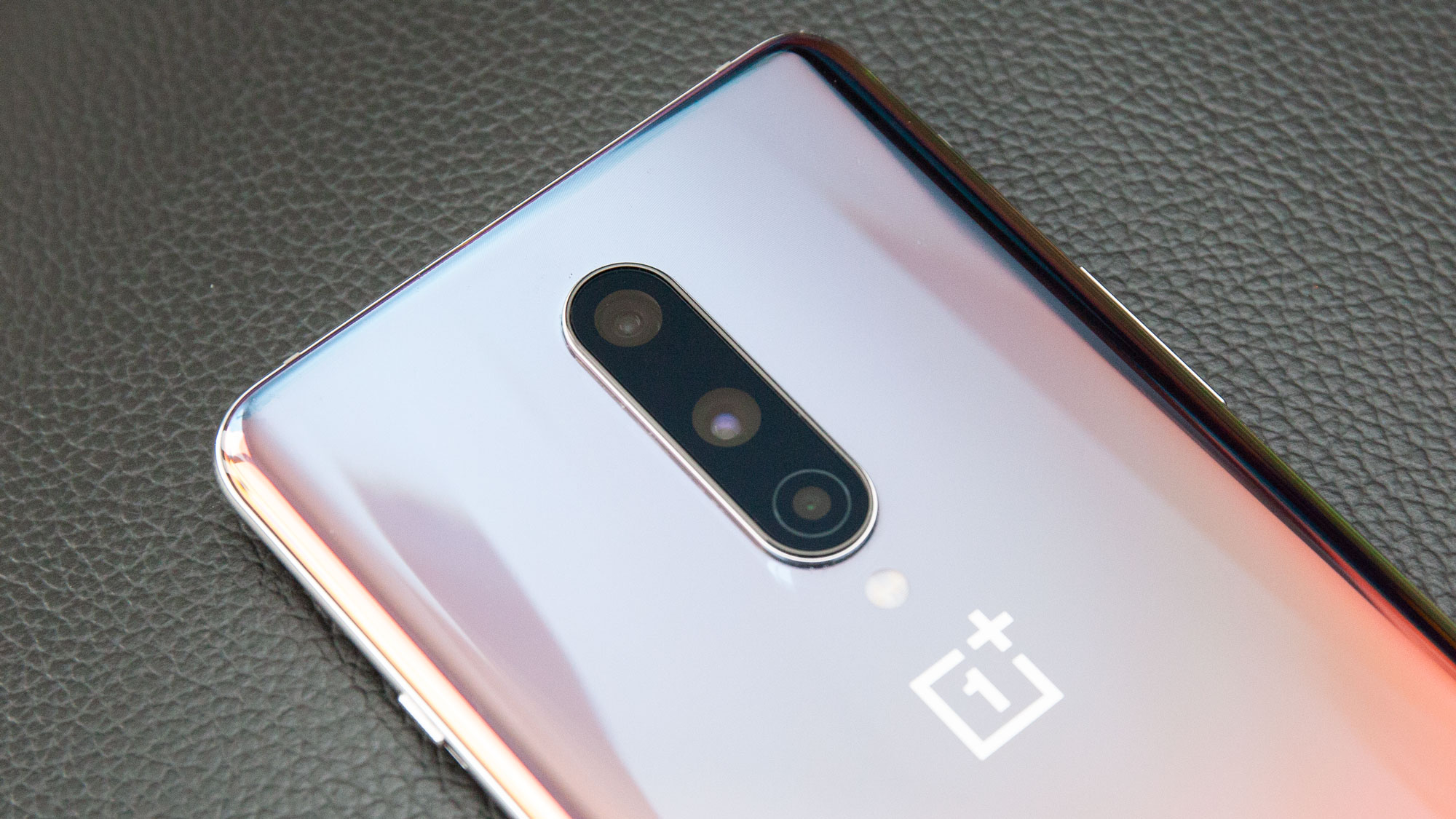TechRadar Verdict
The OnePlus 8 sets the bar high for mid-priced flagships in 2020. While its design refinements borrow elements from other flagships, it's an undeniably sleek phone, with waterfall display edges and a punch-hole for the front-facing camera. With a Snapdragon 865 and up to 12GB of RAM, the phone is high-performance despite costing notably less than most flagships, making it the cheapest 5G phone in many markets.
Pros
- +
Affordable 5G connectivity
- +
Impressive specs
- +
Big 4,300mAh battery
Cons
- -
No telephoto camera
- -
No wireless charging
- -
Price hike over predecessor
Why you can trust TechRadar
Two-minute review
The OnePlus 8 represents a culmination of trends. It brings the brand’s famously low-price, high-spec phones ever closer to, if not quite on par with, the polish of other flagship phones. In several ways, it also shows that OnePlus is adopting some of its competitors' design philosophies.
We’ve seen this before with the removal of the headphone jack in the OnePlus 7; here, the OnePlus 8 and higher-specced but pricier OnePlus 8 Pro have swapped that phone’s pop-up selfie camera with a punch-hole in the top-left corner.
Admittedly, the camera is less cool to operate, but it isn’t such a loss: switching to a static camera likely made the new phones more water-resistant. In fact, the OnePlus 8 Pro has an IP68 water- and dust-resistance rating (but not the OnePlus 8, which only has the usual OnePlus assurance of water resistance).
The new phone brings the base-level version to a flagship level of polish and improves its specs, too. Last year, the brand’s phones split between an affordable ‘standard’ version and a Pro model that was a substantial upgrade in terms of both features and looks; but this year the OnePlus 8 gets physical refinements that weren’t granted to 2019’s more affordable models.
If you don't mind sacrificing flagship perks for even more affordability, the OnePlus Nord has been released as a true mid-range model packing more than a few flagship perks.
In other words, the OnePlus 8 looks a bit more flagship with its curved-edge ‘waterfall’ display and punch-hole for its selfie camera (teardrop notches are passé in 2020) – and it doesn’t hurt that this model ditches the large circular camera block of the OnePlus 7T for a more attractive vertical strip similar to the one on its pricier OnePlus 8 Pro sibling.
The OnePlus 8 doesn’t pack all of the Pro’s tricks – it misses out on a telephoto lens and wireless charging – but the essentials are all here: a Snapdragon 865 chipset, 8GB or 12GB of RAM, a 6.55-inch FHD+ AMOLED display, and a 4,300mAh battery that can be fully charged in an hour using the Warp Charge 30T charger included in the box.
Sign up for breaking news, reviews, opinion, top tech deals, and more.
Its specs are impressive enough, but with 5G connectivity, the OnePlus 8’s $699 / £599 (about AU$1,100) price tag makes it the most affordable 5G phone in many markets. It’s a svelte phone with few drawbacks, and hard not to recommend as the best affordable flagship of 2020 thus far.
And that gives consumers another reason to opt for an affordable flagship over competitive mid-range phones like the iPhone SE 2020, which packs the iPhone 11's speedy chipset, and the upcoming Google Pixel 4a. Those phones have more value for their price, but the OnePlus 8 has a full array of cameras, more polish, and 5G connectivity.
While it may not get Android 11 for some time after the OS update comes out later this year, the OnePlus 8 still has plenty of perks to keep it competitive above the other phones coming out in 2020.
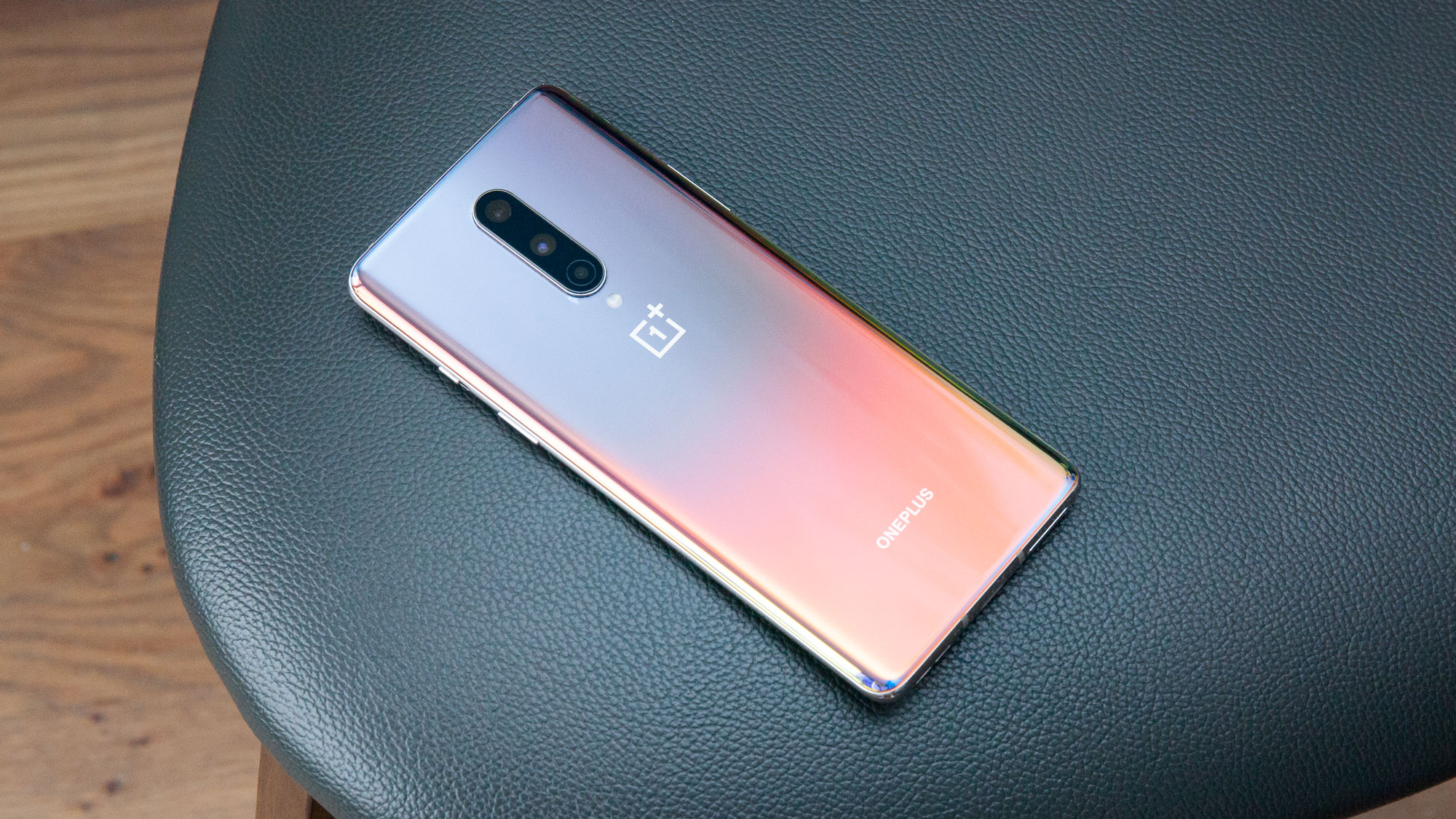
OnePlus 8 price and release date
- This affordable 5G flagship costs $699 / £599 (around AU$1,100)
- The OnePlus 8 landed in the UK on April 21 and April 29 in the US
- Australia launch is still unclear
You can now buy the OnePlus 8 in the US and UK as the phone went on sale in April 2020. We're still not clear whether the OnePlus 8 will be released in Australia. In a statement OnePlus told us: "We are working hard to set up a seamless experience for our fans before we go on sale in Australia".
The OnePlus 8 starts at $699 / £599 (around AU$1,100), putting it above the launch price for the OnePlus 7 (£499 - the phone wasn't released in the US or Australia), and the OnePlus 7T ($599 / £549 / about AU$950). That initial price is for the 8GB RAM and 128GB of storage option, which goes up to $799 / £699 (around $1,372) for the 12GB RAM and 256GB of storage version.
Given the higher polish and 5G connectivity, we aren’t totally surprised by the price hike, though that means OnePlus’ new phone competes more directly with identically-priced affordable flagships like the iPhone 11.
OnePlus has been making inroads into the US market, and the OnePlus 8 will be available on the new T-Mobile (which includes Sprint) – and, for the first time, on Verizon. With the carrier field having been reduced after T-Mobile’s merger with Sprint, the OnePlus 8’s unavailability on AT&T is less of a blow.
While standard OnePlus 8 phones will support sub-6 5G, Verizon is getting a special version that will also work on its mmWave 5G network as well as its future mid-band network. That Verizon version can be ordered on April 29 in Onyx Black or an exclusive Polar Silver hue and can be added to a contract for $33/month for 24 months.

Design
- Polished design, vertical rear camera bump
- Tall in the hand, but light: 160.2mm x 72.9mm x 8mm, 163g
- No pop-up selfie camera, opting instead for a less-flashy punch-hole
The OnePlus 8 is a more iterative take on its predecessor, the OnePlus 7T, but it includes enough improvements to make it a serious affordable flagship handset – and in some ways, the new OnePlus phone has less competition given that the Samsung Galaxy S20 line doesn’t have its own lower-priced equivalent.
But the OnePlus 8 has also been elevated closer to Galaxy S-range level with the kind of je ne sais quoi touches that put Samsung’s flagships in a different league to the OnePlus 7T.
These include the waterfall-style curved display edges, which used to be the provenance of the OnePlus 7 Pro and OnePlus 7T Pro, leaving the cheaper models with flat screens. And, as previously mentioned, the circular camera bump in the OnePlus 7T has been swapped for a vertical strip. It protrudes a bit more than the camera housings on other phones, so a phone case that’s flush with the lenses would be a sensible purchase.
In terms of selfie style, the OnePlus 8 lacks the panache that last year’s OnePlus 7 Pro/7T Pro exhibited with their pop-up front-facing cameras. It’s a bit of a shame, but we were always just a little nervous that the safety feature incorporated into those phones – the popped-up lens would retract if the phone detected that it was falling – wouldn’t kick in for some reason, and were extra careful when using them with the camera deployed. The OnePlus 8 is a bit more robust for not having those moving parts.
The OnePlus 8 has a volume rocker on the left side and a lock button on the right; both stick out farther than on last year’s OnePlus phones, and offer a more satisfying ‘click’ sensation to boot. The brand’s signature silence slider, located above the lock button on the right side, likewise has a more tactile feel when switching between ring, vibrate, and silent modes.
As phones get ever heavier, the OnePlus 8’s 180g feels well-balanced – the only 2020 flagship that’s noticeably lighter is the 163g Samsung Galaxy S20, which is also smaller. Most others are heftier by degrees, like the 186g Galaxy S20 Plus and 196g Galaxy Note 10 Plus, all the way up to the 226g iPhone 11 Pro Max.
The OnePlus 8 comes in three colors and two finishes: Onyx Black and Interstellar Glow colors come with glossy glass on the rear, while Glacial Green has a matte texture.
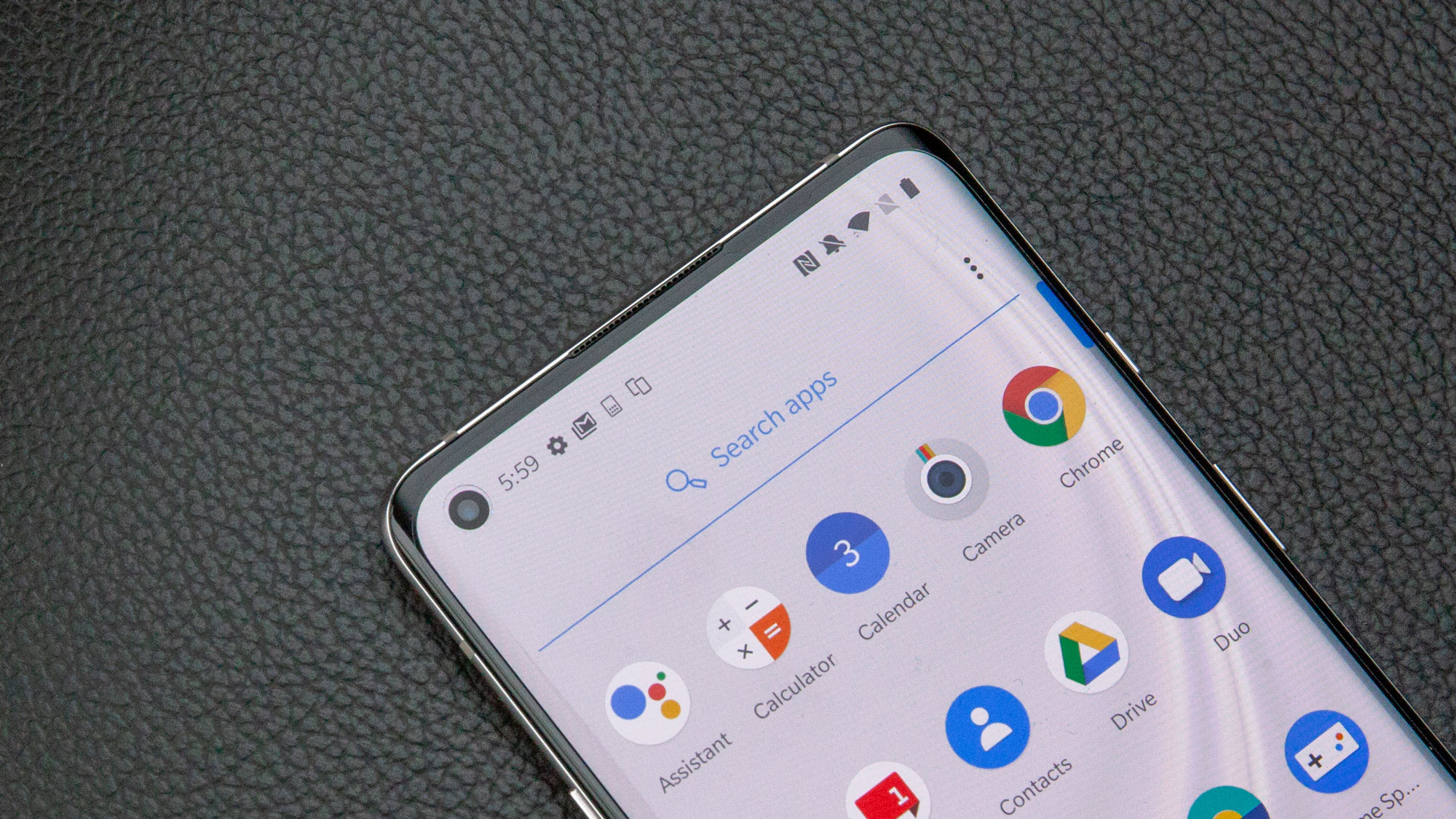
Display
- 6.55-inch AMOLED display
- FHD+ resolution, 90Hz refresh rate
- Curved waterfall-style display edges
The OnePlus 8 packs a 6.55-inch AMOLED display with an FHD+ (2400 x 1080 pixels) resolution. Its 20:9 ratio dictates a relatively tall and narrow handset, which has become more popular in phones – and for good reason. The OnePlus 8 is easier to physically handle, say, if you’re trying to text while holding it one-handed.
It’s not the highest-resolution display, losing out to the Samsung Galaxy S20 line’s WQHD+ screens. In theory, this means you won’t have as sharp a picture, although that would only be the case when watching high-resolution media anyway.
In practice, the resolution here is fine for casual media consumption; you’d really only notice a difference when placing phones side-by-side, as we did with a Samsung Galaxy S20 Plus and an iPhone 11 Pro Max. Netflix shows were just as sharp, though the OnePlus 8 did blow out bright backgrounds, leaving sunny skyboxes without much detail.
What you will notice is that the screen is brighter than those on the OnePlus 8’s predecessors. Compared to the screen on the OnePlus 7 Pro, the OnePlus 8’s display is easier to see in daylight, which is crucial when you’re looking at it with the sun directly overhead. And when it’s nighttime? The OnePlus 8 outshines – literally – nearly every other flagship on the market.
The OnePlus 8 packs an in-screen fingerprint sensor, which is fast and accurate – even when used at various angles. This has been the case since the OnePlus 7 series, and it’s nice to see when phones like the LG V60 still struggle with this technology.
The phone also features Reading Mode and Zen Mode, both of which debuted on the OnePlus 7. While the use cases for both are niche, they’re nice to have, especially now that we’re spending even more time nose-down in our handsets, and more than ever could benefit from the odd screen break.
Like the 2019 OnePlus phones, the OnePlus 8’s display packs a maximum 90Hz refresh rate (the default is 60Hz), and as on those handsets, this setting makes scrolling a smoother experience overall, whether you’re swiping through screens or pursuing your social media feeds.

Cameras
- Three rear cameras: 48MP main, 16MP ultrawide, and 2MP macro
- 4K 60fps video
- 16MP front-facing camera
The OnePlus 8 packs a trio of rear cameras – and for the first time in a while for the brand, one of them is not a telephoto. Like some other 2020 flagships, OnePlus’ basic model forgoes optical zoom for digital, leaning on its 48MP f/1.75 main shooter and ‘crop zooming’ to simulate a telephoto effect.
This works well enough for the OnePlus 8 at low settings, but we wouldn’t advise using it beyond 2x or 3x. Shots taken at the maximum 10x digital zoom are blurry – not something you’d ever share.
To be fair, other phones’ digitally-assisted maximum zoom levels also take photos that look more like impressionist paintings, though their optical telephoto lenses typically stretch their upper limit beyond 10x. (The one exception, the LG V60, takes noticeably sharper pictures at its own 10x max, likely owing to the larger 64MP sensor on its main shooter).
It’s a different story with the OnePlus 8 Pro, which has a 3x optical zoom that pushes its digital zoom out to 30x, as on the Samsung Galaxy S20 and S20 Plus. In our brief and social distance-compliant testing, we found that flagships with any optical zoom – even the 2x telephoto on the iPhone 11 Pro Max – took sharper distance photos than the OnePlus 8.
Instead of a telephoto camera, OnePlus has chosen to equip the OnePlus 8 with a 2MP macro camera, for close-up photography of flowers, pets, or the like. However, we didn’t find this to be terribly useful, or even that precise at ultra-close (millimeters away) distances; we’ve seen other macro lenses, on the Moto G Stylus and G Power for example, achieve much more accurate focus up close.
Thankfully, the OnePlus 8’s 16MP f/2.2 ultra-wide lens is far more useful. Its 116-degree field of view is great for outdoor shots, and even better for indoor ones, although it’s no more remarkable than similar lenses on other phones.
The OnePlus 8 shoots video at a maximum of 4K and 60fps, with slow-mo at 720p at 480fps or 1080p at 240fps. Super Stable mode does as it claims, smoothing out juddery footage effectively – a feature better suited for active videographers or for recording while moving.
The 16MP front-facing shooter is functional and sharp, though it tends toward a warmish yellow/orange tint. Shots are detailed, but it also tends to overexpose subjects slightly, so expect to capture images with more brightness and less shadow.
Camera samples
The OnePlus 8's cameras are geared toward medium, wide, and up-close photography. To illustrate its range, here are some sets of camera samples showing off its contrast as well as its limited telephoto capabilities

1x zoom

2x zoom

10x zoom
The crop zoom is even less impressive when focusing on a subject in the distance. See below:

1x zoom

2x Zoom

10x zoom
Up close photography, portrait mode, and macro all function fine, if unspectacularly:



There are moments of better capture and focus, especially in the right lighting:


And, at last, some front-facing photo samples:


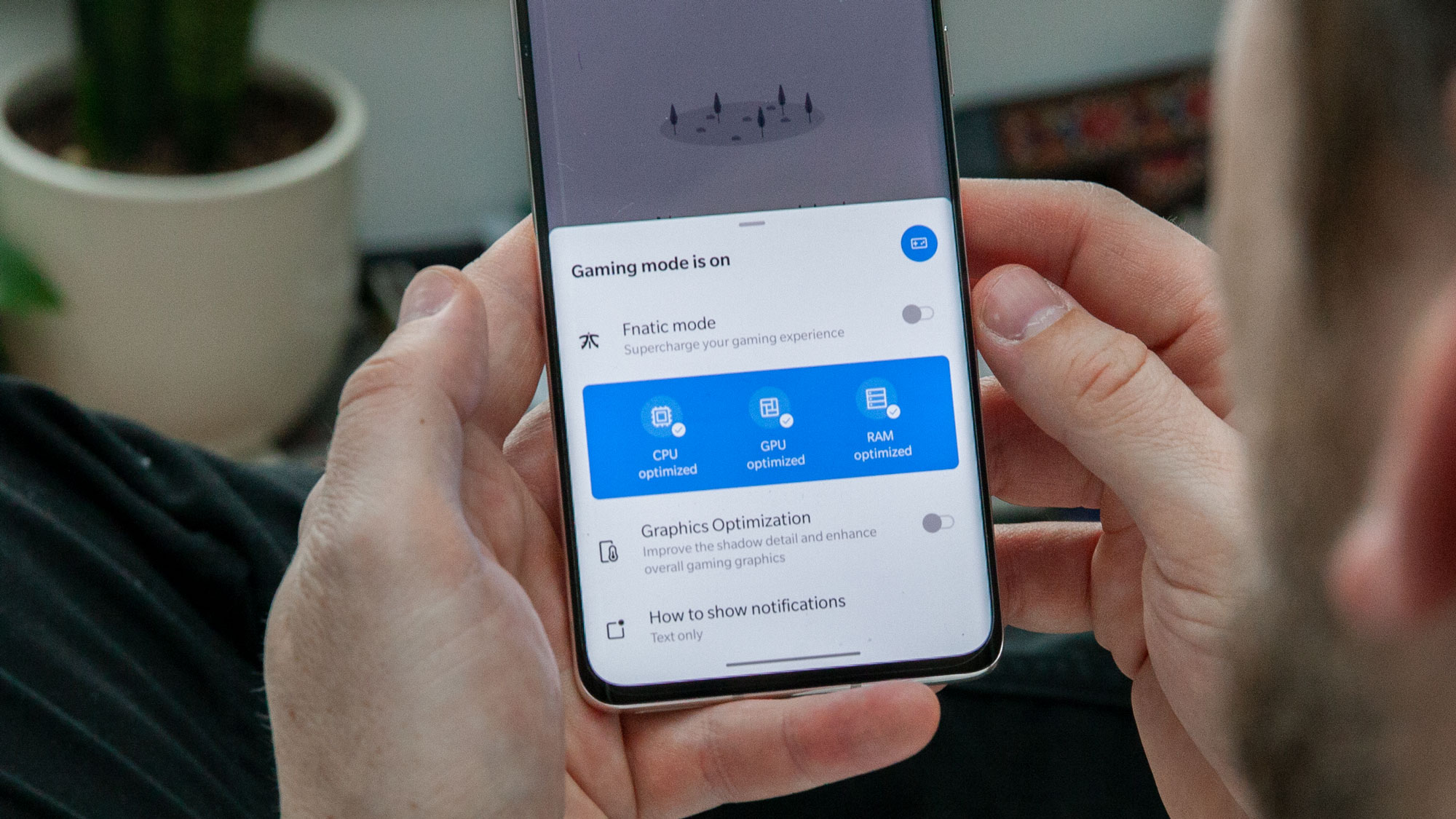
Specs and performance
- Snapdragon 865 chipset with a 5G modem feels fast all-around
- 8GB RAM with 128GB of storage, or 12GB of RAM with 256GB of storage
The OnePlus 8 packs a Snapdragon 865 chipset paired with a Snapdragon X55 modem for 5G connectivity. You can opt for either 8GB of RAM and 128GB of storage, or 12GB of RAM and 256GB of storage.
We tested the model with 12GB of RAM, and it scored 3,401 on Geekbench 5, just edging out Samsung Galaxy S20 Ultra’s score of 3,300. Curiously, it also edges out the OnePlus 8 Pro, which returned an average score of 3,159 in our tests.
What does that mean? The OnePlus 8 is as fast as you need it to be, switching between apps and games without delay.
OnePlus’s OxygenOS skin for Android hasn’t changed much from its predecessors – it’s still a minimal overlay with a sleek look, although the app tray now has a slight transparency to let the dynamic Android 10 backgrounds show through.
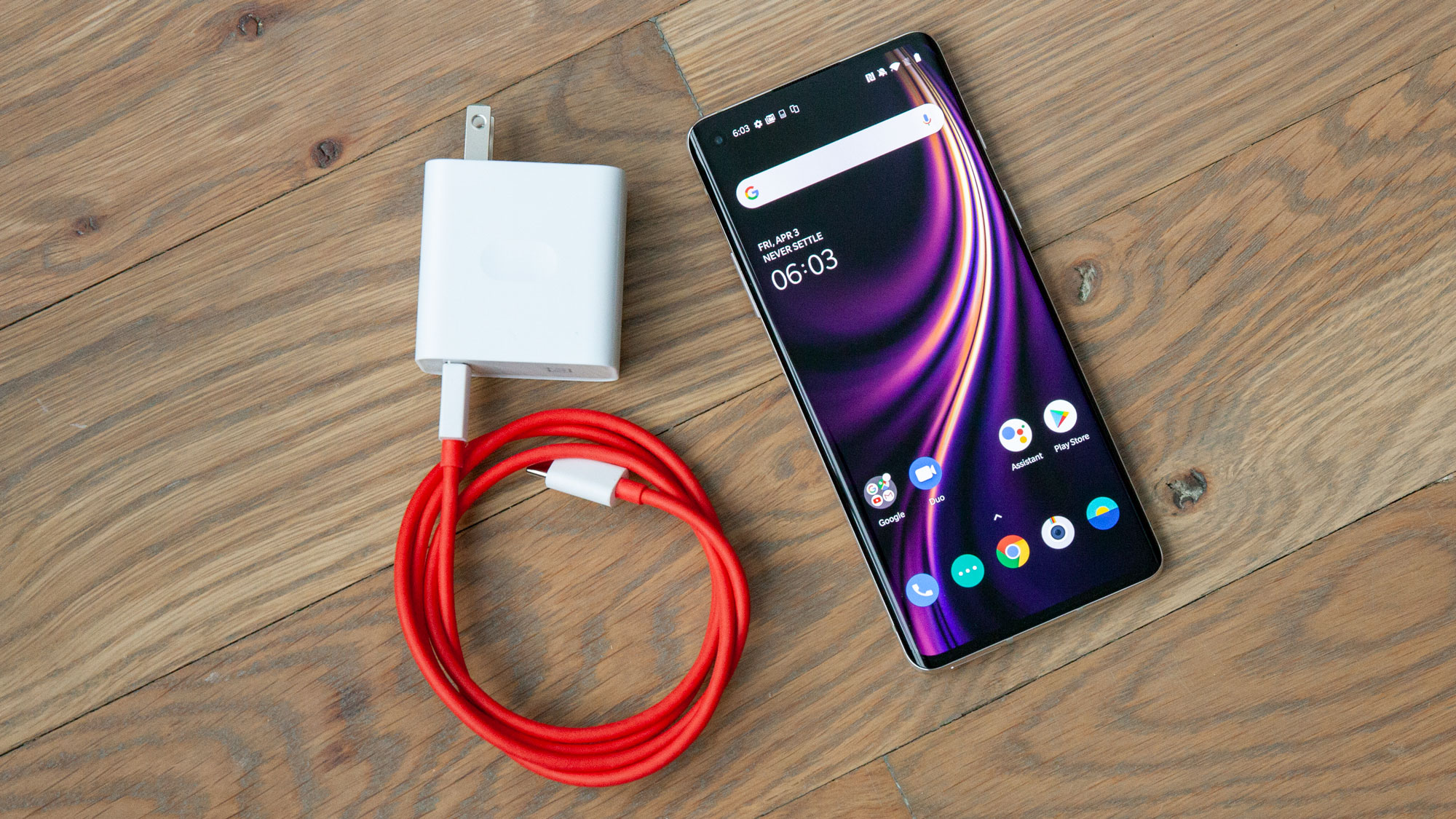
Battery
- 4,300mAh battery lasts beyond a full day
- Warp Charge 30T charger fully recharges in an hour
- Doesn't support wireless charging: it's a 8 Pro-only feature
The OnePlus 8 has a 4,300mAh battery, which we found to be big enough to last through a day and then some. This is a bit above batteries in other flagship phones – for instance, the Samsung Galaxy S20 packs 4,000mAh of capacity.
The OnePlus 8 has a 4,300mAh battery, which is a bit bigger than the power packs in some comparable phones – for instance, the Samsung Galaxy S20 packs a 4,000mAh battery. We found it should be enough to last you through a day and then some of typical use.
The OnePlus 8 comes with a Warp Charge 30T charger, which was an impressive development that debuted in the box with the OnePlus 7T, delivering 23% faster charging than the charger that came with prior OnePlus phones.
The charger lives up to its warp-speed claims, getting our OnePlus 8 from 10% to 41% in just 15 minutes, and fully topping up the phone in just under an hour. Don’t expect quite that impressive a rate if you’re using a different fast charger, as OnePlus told us its phones are fine-tuned to get the most out of the Warp Charge 30T.
The OnePlus 8 does not, unfortunately, have wireless charging. The OnePlus 8 Pro does, and not just using run-of-the-mill wireless chargers, either: OnePlus has released its own proprietary Warp Charge 30 Wireless Charger, which juices up phones at a claimed 30W rate. Not all handsets can support that rate, but the 8 Pro can.
It goes without saying that, as it lacks wireless charging, the OnePlus 8 also lacks reverse wireless charging. This isn’t a feature we especially miss, but it is one that you’ll find in rival flagships like the Samsung Galaxy S20 series. Given the OnePlus 8’s large battery, it would be nice to be able to donate some of that charge to a pair of wireless headphones, say.
Should I buy the OnePlus 8?

Buy it if...
You want high specs and 5G at a lower cost
Much like its predecessors, the OnePlus 8 packs in great specs at a lower cost than competing flagships, which in the case of this year’s crop of 5G phones can get especially pricey. If you want the best in terms of key specs but don’t need a complete set of bells and whistles, the OnePlus 8 is a great pick.
You want a lighter phone
The 180g OnePlus 8 might not be the lightest phone on the block – that honor goes to the 163g Samsung Galaxy S20 – but it’s certainly more manageable than the 226g iPhone 11 Pro Max.
You want a flagship without the fluff
As has been the case with previous OnePlus phones, the OnePlus 8’s OxygenOS overlay is big on options and small on bloatware apps or labyrinthine menus. If you want an Android flagship without fuss, this phone is for you.
Don't buy it if...
You want a powerful zoom camera on your phone
The OnePlus 8’s camera array works well in daylight, but it seriously lacks zoom capabilities. If you want serious telephoto performance, this phone isn't for you.
You want all the flagship goodies, like wireless charging
The OnePlus 8 also misses out on a couple features that come in top-tier flagship phones. If you want wireless charging (and reverse wireless charging), look elsewhere.
You want a cheap flagship
The OnePlus 8 is more affordable than most flagships, but it’s by no means cheap. If you’re looking for a phone in a more mid-range price tier, perhaps opt for an older OnePlus phone or other affordable option.
First reviewed: April 2020
- Take a look at our OnePlus discount codes for the best OnePlus offers and savings.

David is now a mobile reporter at Cnet. Formerly Mobile Editor, US for TechRadar, he covered phones, tablets, and wearables. He still thinks the iPhone 4 is the best-looking smartphone ever made. He's most interested in technology, gaming and culture – and where they overlap and change our lives. His current beat explores how our on-the-go existence is affected by new gadgets, carrier coverage expansions, and corporate strategy shifts.

